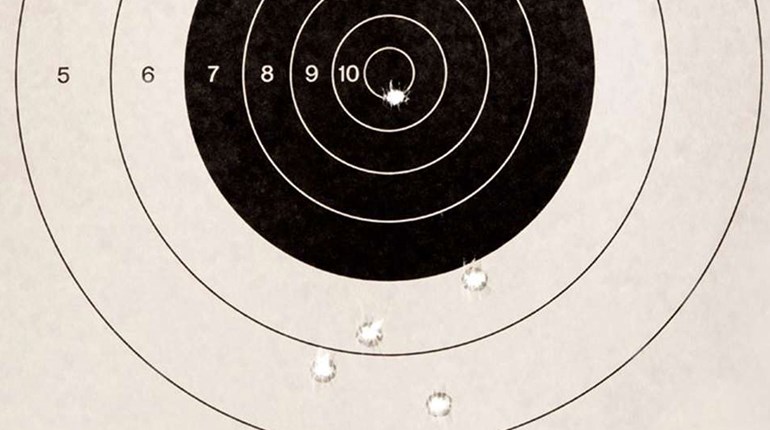
Whether you are new or seasoned in an activity, you reach a plateau when it comes to self-improvement on your own. That is the level where you cannot figure out what you are doing wrong (or right, for that matter). You don’t have to like the idea, but it is the reality. Let’s face it, if you had all the answers, you probably would be in a different profession. Instead, you seek out those with greater experience than you who can lend their critical eye. It is common in many other activities, from golf to marriage—we like to seek help to better our game. There are barriers that can affect training, but there are ways to overcome those barriers.
Probably the number-one barrier to seeking out help is time. We all lead busy lives, we have families and occupations pulling at our time. We find 24-hour days seem to be 2 hours short. When I speak with students about why they attended training, many comment they finally found the time. While I believe they are correct, a better way to look at their responses was they finally made the time. They made the time because at some point it became a priority. Why did it become a priority? Reasons vary, but many had to deal with either being the subject of a violent crime or a close call to a violent crime. A close call can come in the form of a family member or close friend being the victim of a violent attack. If you were to stop and ask yourself who within your immediate circle has been a victim or been close to being a victim, you might be surprised how close this touches you. For some who are survivors of violent crime, they are quick to criticize themselves for not doing something sooner. That can be a bit unfair, or too much blame to handle. Instead, be thankful you have the opportunity to alter the outcome of a future incident should one be on the horizon. I had a student who was shot six times during a dispute. He survived, and has understandably made his personal safety a top priority.

Resources are a difficult subject to discuss because times can be tough for many. I get that. Believe me, I do. I see it more than you might think. With so much competing for your almighty dollar, how do you justify spending money on training? Part of this answer is tied to time. When you make time to attend training it is partly due to the training becoming a priority. A similar answer regarding resources comes into the picture. I have had several students tell me how they put money aside, how it took longer than they wanted, but they eventually reached their goal. I often hear from them after attending a recognized training class that they wish they had made more effort to get training sooner.
Now, this is a good time to remind folks you get what you pay for (or cheap isn’t always best). I encourage you to consider the following process when selecting a potential instructor/school. What benefits do you get from said instructor? If they do a good job, the benefit is in your development. A quality you look for, then, is how successful the instructor is at improving your technique. If there is a history of improvement from other students, it can be assumed you would see similar results. It is at this point you can factor in “best value.” While this instructor may not be cheapest, he or she offers the best value for your investment. You stand to gain more in return. It also helps in your decision making when you have to factor in availability. You may desire to attend one training class, but due to scheduling conflicts, you cannot. Best value allows you to be objective in your selection and generally reduces buyer’s remorse.
For many of us, admitting we don’t know something is a barrier to learning. I’m no different, I dislike the idea of not knowing something within my profession. I make it a major goal to constantly keep pushing my boundaries. This drive used to be isolated to shooting. I wanted to be at the top of my game. In my eyes I had to be the best defensive shooter, whatever the definition. I learned many things in this quest. The biggest was the realization that being the best was not as important as I thought. Yes, I need to demonstrate the drills at an elite level. What was more important was my ability to communicate to students how to achieve excellence in their own way. That brought me to the crossroads where books I read had less to do with shooting and more to do with teaching. While I consider myself an excellent instructor, there is still so much I don’t know. My point is, even as a highly regarded instructor, I am still learning how to teach. Even though I was looked up to by many, I still had much to learn. I know a lot of folks are reluctant to attend training because they don’t want to look bad. As a reminder, everyone had to start at the beginning. Don’t let your ego prevent you from learning. I love it when a student is thirsty for knowledge—almost insatiable. This motivation coupled with their capacity to learn will lead to proficiency and eventually, mastery.
Skills—or lack thereof—can affect your training progress. There are physical limitations some must face; everything from injuries to disabilities. However, I’m here to tell you there are many options available. I have had the honor to work with adaptive athletes, and they continue to awe me with their drive and determination. Yes, some actions may be difficult if not impossible, but there are workarounds. Don’t let this prevent you from getting training. Not all instructors are able to work with adaptive athletes, but there are more who go above and beyond. It kind of limits the excuses for everyone else who is reluctant to train. I do recognize some real anxieties many might have, and a big one is safety. Some feel they are not safe and worry about potentially injuring themselves or someone nearby. That’s a real anxiety. It is one addressed by following all safety rules all the time.
A good instructor will brief, demonstrate and reprimand students on safety. They will set expectations of their students; how they should act and behave while handling guns. I find this to be critical in creating the best learning environment for all students. Another anxiety regarding skill is holding onto the gun during recoil. Probably the most important skill in the early stages is learning how to correctly hold the gun so you have positive control. Once folks can see their skill in holding a gun improve, it frees them up to pay attention to the more-challenging skills such as trigger management. Everyone struggles with trigger management so the best advice is to be patient. It takes time to develop good trigger management, it will be frustrating—even disappointing—just don’t let it stop you from coming back for more.

The next factor affecting training is not having the necessary equipment. Obviously, to learn how to shoot requires you to have a firearm. That gun does not necessarily have to be purchased by you. Family members and friends may have guns you can borrow to use in training classes to get a feel for what you look for when purchasing a gun. I love the idea of “try before you buy.” It is no different than taking a new car for a test drive. This still poses a problem, however, and that is knowing what you need. There is a difference between needs versus wants. You have to have an understanding of the mission first. What do you want the gun to accomplish? Is it for home defense, concealed carry or recreational shooting? The first two have pretty specific requirements. I have written on concealed carry in previous articles, so let’s focus on what makes a good home-defense gun. While many will argue about the greater lethality of a shoulder-fired arm, the average homeowner will be better-suited with a handgun. The first consideration is safe storage. If you cannot safely store the gun from unauthorized access, you are going down a dangerous road. Once safely secured, it becomes an access issue. How quickly can you access the firearm under a variety of conditions; in the dark, from a deep slumber or under duress?
The next issue has to do with managing family members, if present. If you have young or old in your home, you need to marshal and move, doing so with a handgun versus a long gun will be much easier and safer. A handgun does not require both hands to fire effectively, so if your weak hand is occupied with other tasks, you can still fire if necessary. Suitable magazine capacity is another consideration for a home-defense gun. I try to emphasize to my students that it is a “come as you are” war, meaning if you didn’t bring it, don’t count on it when things get bad. A decent magazine capacity of 15 or more rounds makes for a good gun to deal with unknown threats. Lastly, the ability to mount a weaponlight, while not an absolute, is a great benefit. I must caution you to not use the light to illuminate unknowns. With family members in your home, using a handheld light for navigation and identification is a far safer approach (see our “Handguns” column on page 32 for more information). Remember, a major gun-safety rule is to keep the muzzle pointed in a safe direction and wherever a weaponlight is pointed, so is your muzzle.
Over the years, I have had the privilege of working with a massively diverse student body. Students come from all walks of life, backgrounds and lifestyles. Each has their own limitations and fears. Finding the time to dedicate to training is tough, but if you make your personal safety a priority, you will find more opportunities. While there are free resources available, you will eventually have to invest in your training. I encourage you to consider your safety an investment, which should make it more reasonable. Remember, everyone started out not knowing and many didn’t realize what they didn’t know. Open your mind to new material if seasoned, or to taking in more information for your foundation. Skill can share attributes within knowledge, but keep in mind there is a right way and wrong way. Equipment can be a major barrier, so consider renting or borrowing gear as a new student. It also helps you to make better purchasing choices down the road, having tried it before your purchase.
I hope this helps many navigate through what I have seen over many years of being an instructor.





































